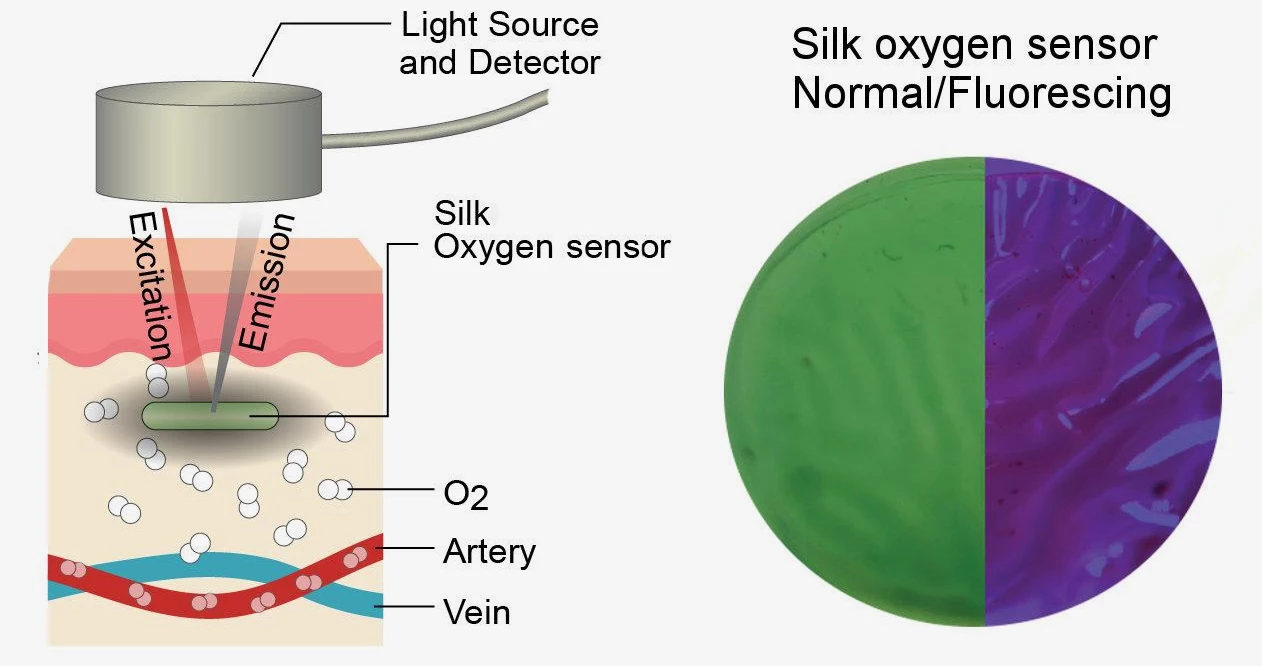When treating patients for certain conditions – including COVID-19 – it's important to monitor their blood oxygen levels. A new sub-dermal photosensitive sensor provides a new means of doing so, plus it could one day be used to measure other blood-borne substances.
The technology is being developed at Massachusetts' Tufts University, in the lab of Prof. David Kaplan. It currently takes the form of a thin-film disc which is smaller than a US dime, and that gets surgically inserted beneath the top layers of skin – sort of like a tattoo.
The film is composed of a permeable gel made mainly of fibroin, which is a protein derived from silk. Not only is fibroin biodegradable and biocompatible, but it also doesn't change the chemical properties of substances added to it.
In this case, that substance is a compound known as PdBMAP, which glows when exposed to near-infrared light – the greater the amount of oxygen in the immediate environment, the shorter the duration of the glow. Depending on how it's made, the sensor will harmlessly dissolve within the body over the course of anywhere from a few weeks to a year.
In a test of the setup, the scientists inserted the sensor into the skin of rats, then shone near-infrared light through the rodents' skin at that location. The sensor responded by glowing, with the duration of the glow accurately representing the oxygen level of the interstitial fluid surrounding it – oxygen levels in that fluid reflect those of the blood.

Although blood oxygenation can already be non-invasively measured using a pulse oximeter, it is hoped that once developed further, the sensor technology could also be utilized to measure amounts of other substances in the blood, such as glucose, lactate or electrolytes. Currently, such measurements have to be obtained through blood samples, or by hooking the patient up to complex equipment.
"We can envision many scenarios in which a tattoo-like sensor under the skin can be useful," said Thomas Falcucci, a graduate student in Kaplan’s lab who developed the device. "That’s usually in situations where someone with a chronic condition needs to be monitored over a long period of time outside of a traditional clinical setting. We could potentially track multiple blood components using a sensor array under the skin."
The research is described in a paper that was recently published in the journal Advanced Functional Materials.
Source: Tufts University




